#dedicated orchard programmers
Explore tagged Tumblr posts
Text
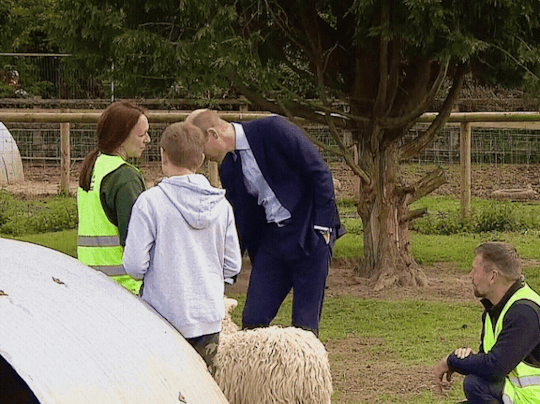


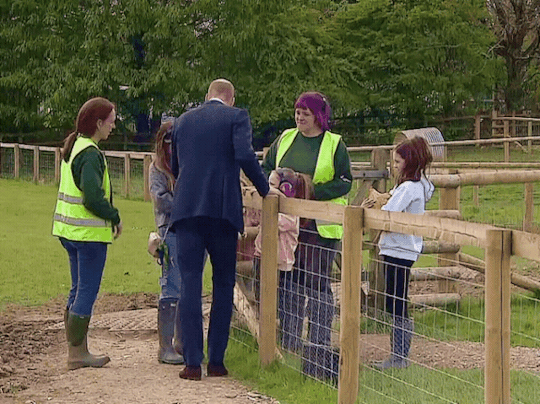
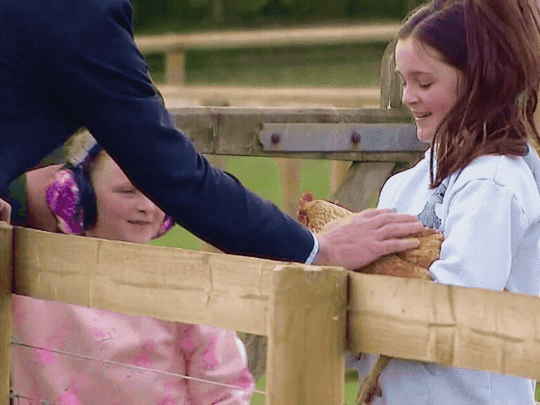

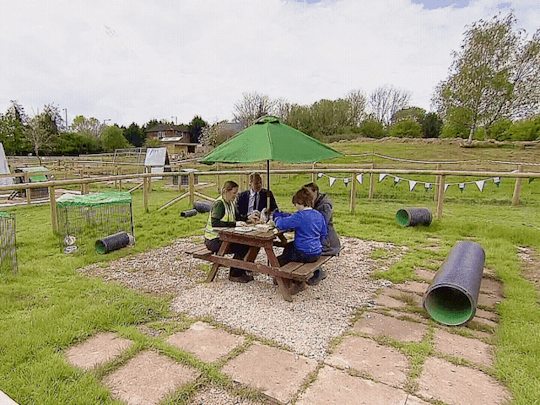
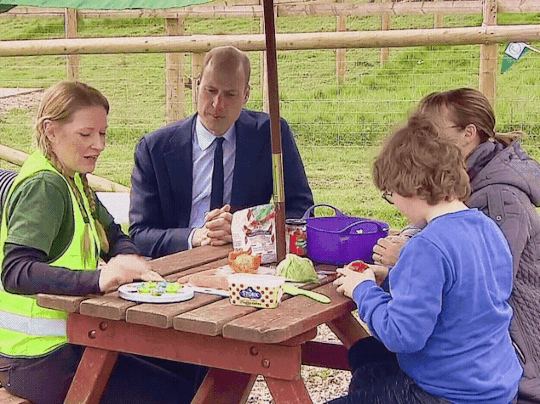
THE PRINCE DIARIES ♔
25 APRIL 2024 || WEST MIDLANDS (2/3) : WOODGATE VALLEY URBAN FARM
The Prince of Wales visited Woodgate Valley Urban Farm, a city farm dedicated to supportingchildren and young people struggling to access education and those experiencing mental health challenges. Woodgate Valley Urban Farm runs a range therapeutic programmes for children involving children and nature. Based on a six-acre site of farm, woodlands and orchards, it is home to a variety of animals including Grey Face Dartmoor Sheep. Participants are provided one-to-one support whilst on-site, and results have shown that children regularly visiting the farm see a marked improvement in their mental health and wellbeing. During his visit, William met staff and volunteers and was taken on a tour of the grounds. He heard first-hand about the work they do with children and joined a group of participants in some of their regular programmed activities including taking care of animals.
#prince of wales diaries 2024#prince of wales diaries#british royal family#british royals#royalty#royals#brf#royal#british royalty#prince william#the prince of wales#william wales.#prince of wales#william prince of wales#royaltyedit#royalty edit#royalty gifs#royaltygifs#25042024#WestMidlands24.2#WestMidlands24#my gifs
73 notes
·
View notes
Text
#residential care home in brighton#residential care homes uk#bexhill residential care homes#24hr care home inbexhill-on-sea#orchard house residential care home#uk
0 notes
Link
On a warm December day in one of the last cemeteries in Singapore, Man Zu begins to chant. His orange Taoist robes stand out amidst the thousands of gray gravestones; his round face is tan and leathered from years of working in the sun. He is here today to help a group of siblings exhume and relocate the remains of their father, mother, and uncle.
Choa Chu Kang Cemetery does not look like the busy metropolis that is Singapore. There is barely a building in sight; the tallest structure stands about 1,000 feet away, a single-story building equipped with a food stall. In the vicinity, there is a branch of the National Environment Agency, situated near the cemetery to help families exhume their ancestral graves.
Much of the cemetery looks dilapidated, dotted with heaps of rubble and clumps of weeds. The air smells of mud, sand, and grass. Destroyed tombstones stand next to others that are still intact, scattered with miscellaneous debris: incense holders, empty Oreo packets, broken vase fragments. Stray dogs, a rare sight in urban Singapore, patrol the area.
The mass obliteration of graves—or, as it is more commonly known, exhumation—is a result of the government’s redevelopment plans. The Choa Chu Kang Cemetery Exhumation Programme was announced in 2017 to make space for the expansion of an airbase, which necessitates the relocation of more than 80,000 graves. The Cemetery is home to Chinese, Muslim, and Hindu graves. In the current phase, more than 45,500 Chinese graves will be exhumed.
Choa Chu Kang Cemetery’s fate is a mirror of what happened to Bukit Brown Cemetery in 2013. At the time, Singaporeans protested its destruction. Bukit Brown was the resting place of key historical figures and home to a quarter of the bird species in Singapore, but it was was demolished to make space for a new highway.
As recently as 1978, there were 213 cemeteries in Singapore, with burial grounds both large and small scattered across the island. (At approximately 278 square miles, the entire country is smaller than New York City.) By 2011, there were only 60 cemeteries. Many estates and malls stand on former cemeteries, from Singapore’s most popular shopping district, Orchard Road, to residential neighborhoods in the heart of the city-state.
Though most cemeteries have been demolished, the few that remain serve as reminders of the many communities that have called Singapore home. The Japanese Cemetery Park, established in 1891, offers a glimpse into the world of early Japanese settlers: soldiers, merchants, young women brought to Singapore as sex workers. Cemeteries also showcase Singapore’s religious and cultural diversity, with designated sites for Christians, Hindus, Muslims, Jews, and the different Chinese clans.
Today, only one—Choa Chu Kang Cemetery—is active. Even then, the government imposes a burial period of 15 years, after which families must relocate the remains.
Jo’s father, mother, and uncle have resided here since the 1980s. She is here today with the rest of her family to exhume all three graves. Since each exhumation takes about an hour, they have decided to divide and conquer: Jo oversees the exhumation of her mother’s grave with her children, and her brothers have split up to attend to the other two graves.
Two workers from the National Environment Agency stand by to help collect the remains, which will be cremated and stored at the government-owned Mandai Crematorium and Columbarium.
After the Taoist rites are complete, gravediggers clear away the soil, revealing the surface of a wooden coffin. A tarp, propped up by poles, covers the grave, preventing the dead from being exposed to sunlight. “Ma!” Jo exclaims, when they approach the grave. She starts singing a classic Chinese children’s song: “Only mother is good in this world.”
The worker breaks open the coffin. The lid is still intact, though visibly worn down. They had used good quality wood, Jo points out. The worker descends into the grave, muddy water coming up to his knees.
Calmly and deliberately, the gravedigger moves remains from the coffin into a white bucket. He also recovers pieces of clothing and a rectangular black block: joss paper, or paper money that was buried with the dead. Some of the bones are blackened from their years underground; some are large and long, while others are small and brittle. The last to come out is the skull. Jo calls out in the Chinese dialect of Hokkien: “Mama, we’re moving house.”
In 2019, a man named Tan helped his family move his grandmother’s remains from Choa Chu Kang Cemetery to a repository for ashes of the deceased, Kong Meng San Phor Kark See Columbarium. The family has yet to celebrate the annual Qing Ming, or Tomb-Sweeping Day, at his grandmother’s new home. He fears that few people will show up. “There’s no space here,” he explains, gesturing down a narrow aisle.
Kong Meng San Phor Kark See Monastery is the largest monastery in Singapore, with two dedicated columbaria within the compound. Tan’s grandmother is located at the newer, more modern one, next to thousands of cremated neighbors. (Due to COVID-19, visits are currently by appointment only, masks are required, and groups are restricted to five members of the same household.)
The niches for each set of ashes are organized into blocks and lined up in rows inside the air-conditioned room. Some are so high that they can’t even be seen, and nearly touch the ceiling.
Death is expensive in Singapore, given the scarcity of land here: Prices run up to $7,000 for a single niche (less-visible units are cheaper). A few niches have been purchased but are not yet occupied, and some are marked with a hongbao, the red envelope usually stuffed with money for Chinese New Year. Others show signs of recent visits, such as flowers, keychains, and even small food magnets.
Tan says that his grandmother’s new home has changed the family’s traditions. “We would gather at seven in the morning at my father’s place, and then drive to the cemetery,” Tan explains. “Then we would sweep the tomb and the whole family would picnic together. How can you do that here?”
In the columbarium, there’s not enough space for the usual offerings of rice, roast pork, and other dishes to be placed near the ashes. Instead, the monastery has an allocated outdoor space where families can lay out feasts for the dead.
The practice of burning joss paper, too, has been streamlined for efficiency. An Eco-Burner has been installed in a parking structure nearby, where joss paper is collected from families and burnt in bulk by staff members.
By 1985, Singapore had already exhumed 21 cemeteries. According to the government, cemeteries take up too much space, and Singapore needs to grow if it is to accommodate its nearly six million residents. Some families scatter their ancestors’ ashes at sea; columbaria are a more permanent alternative.
Tightly pressed together, the rows of niches in columbaria look almost like Singapore’s ubiquitous public housing blocks, each one almost indiscernible from the next. It’s even possible that apartments will eventually replace columbaria, says Bernard Chen, who studied history at Oxford University and has experience in the funeral services industry.
Under British colonial rule, Chen explains, burial grounds were located on the outskirts of the downtown area. But as the city of Singapore grew and more space was needed, cemeteries were seen as “space wasters.” As early as 1952, a Burials Committee had already been set up to encourage cremation instead of burials.
“Whenever the state appropriates land for the dead as land for the living, it always uses the same narrative, which is that the land is for national development.” Chen says. “If you bring this to its logical conclusion, in time to come, there will be zero land for the dead.”
“When we are left without cemeteries, what is the next collective community to be sacrificed on the altar of national development? Columbariums.”
For the sake of national development, the dead are constantly moving house: from cemeteries to columbaria and perhaps even into homes. “Because the state squeezes the land out for the living, it's either you dump the ashes out to sea, or you bring the ashes home,” Chen says. “Every single unit [becomes] an urn space.”
In land-scarce Singapore, where a luxury apartment can cost thousands of dollars per square foot, urban redevelopment demands that the dead make way for the living. With that, rituals of death like Taoist rites and ancestral worship are uprooted along with places of death.
The destruction of Singapore’s cemeteries is striking, but it is not sudden or surprising. It is an ongoing project that started before the nation’s independence, and Singaporeans have accepted and adapted to it, with some reluctance. Still, Tan worries about what will be lost in a country without cemeteries as places to gather and remember the dead. “At Qing Ming, we would have 40, 50 people, three generations all attending,” he recalls. “It was the only time they would come together.” He looks at the columbarium, holds out a photo of his family at the cemetery, and shrugs. “It’s different, right?”
21 notes
·
View notes
Text
5 Things To Observe When You Go to A Showflat
Midwood showflat has noteworthy amenities upgrades, transport the Jurong Region Line, to be prepared in 2026, will associate the district to the current rail organize for quicker travel to the rest of the island. The acquisition and redevelopment of Peak Residence will be funded via financial institution borrowings and inner sources. Upon its development, Peak Residence will be suitable for younger households and the working class who needs to take pleasure in quick access to amenities and amenities in District eleven of Singapore. One Holland Village is about within the Central Region of Singapore, between the planning areas of Bukit Timah and Queenstown, is bounded by Lorong Mambong, Lorong Liput and Holland Street. New Mixed growth is beside the Holland Village MRT Station, below the Circle Line. One Holland Village sits on the new mall and has a web site space of 247,127 square feet of land, of which 145,000 sq. toes will go into retail and will house 296 residential flats. It will deliver a whole new experience into the country and thriving Holland Village with new extension, and inject new retail and food and beverage retailers overlook the general public plaza, which is most best for life-style occasions and programmes, creating a pretty and vibrant gathering for all. Van Holland enjoys the convenience of being located near Holland Highway and Holland Shopping centre that incorporates a plethora of dining and shopping spots in addition to facilities comparable to pharmacies, banks and supermarkets. In addition to having carry a worthwhile actual estate, the town centre and the famous buying and entertainment belt Orchard Street is a few minutes drive away. Van Holland is linked to the Ayer Rajah Expressway (AYE) and Pan Island Expressway (PIE) enabling you to entry other components of the island easily.
View The ShowFlat @ Parc Clematis & Get Discount
It is very important solely interact the Official Direct Developer Sales Staff to assist you on all matters associated to the brand new launch condominium at Parc Clematis showflat. There are a number of complicated procedures and key components to consider earlier than committing to purchase a unit. Rest assured that every one our representatives are certified, well-educated and dedicated to deliver and value-add. Future residents of One Holland Village will take pleasure in comfort at its greatest as it's just conveniently located next to Holland Village. There, its future residents will be capable of get pleasure from a big selection of conveniences proper at their doorsteps with More new retail outlets and eating choices, various bistros serving worldwide cuisines , along with the Holland Village Market & Meals Centre.
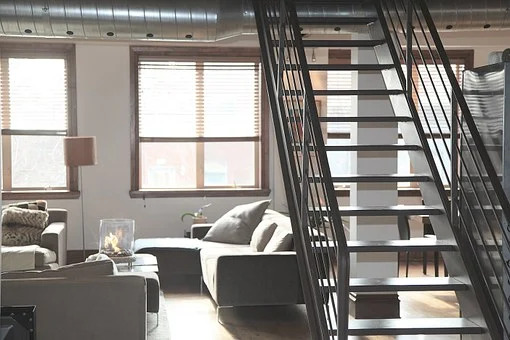
Connectivity in this space is enhanced, allowing the residents to connect with the amenities nearby and other areas of Singapore swiftly. There are many bus companies and roads that link the neighbourhood. The close by Novena MRT Station (NS20), has its northern boundary alongside Bassein Highway and the western boundary along Thomson Highway. The road runs from Bukit Timah at the South linking with the Pan Island Expressway.
1 note
·
View note
Link
orchard cms developers, orchard developers, orchard developers for hire, hire orchard developers, orchard developers india, orchard programmers, orchard programmers india, orchard experts, hire orchard programmers, hire orchard experts india, dedicated orchard developers, dedicated orchard programmers, dedicated orchard experts, orchard web developers, orchard cms web developers, orchard cms developers india
#orchard cms developers#orchard developers#orchard developers for hire#hire orchard developers#orchard developers india#orchard programmers#orchard programmers india#orchard experts#hire orchard programmers#hire orchard experts india#dedicated orchard developers#dedicated orchard programmers#dedicated orchard experts#orchard web developers#orchard cms web developers#orchard cms developers india
0 notes
Text
SMARTWORLD ORCHARD
SMARTWORLD SECTOR 61 GURGAON - ORCHARD
SMARTWORLD introduced a new domestic tasks in field 61 gurgaon, new big launch with substantial admiration capacity at prime location. M3m SMARTWORLD 2.5 & 3.5 bed room houses with dedicated terrace, basement, office, parking, security, club, plant & appealing prices with absolutely no loading.
Not to be missed out on chance-- purchaser friendly layaway plan on finest place of city, exceptional international programmer, 2.5/ 3.5 bhk low rise houses with costs specs. SMARTWORLD Gurugram is providing one-of-a-kind gated neighborhoods with low-rise houses at Gurugram's prime locations-- Golf Course Extn. Road. with loading free layouts, Independent parking, terraces and dens for all Houses.
Devoted Terrace
Home Office
Devoted Cellar
Car Parking, Protection Plant
ORCHARD - GO INTO THE WORLD OF SMART LIVING
For the aiming millennials there can be no restrictions to dreams. Their jobs, their global vision, requires an area that is global in its style and also uses a host of amenities that make their living more wholesome. Driven by its focus on customer centricity, Smartworld Orchard supplies houses created with unique inputs via AI based research study of customer needs and insights.
GLAMOROUS CLUBHOUSE
A cutting-edge international class club includes in the charm and majesty of SmartWorld Orchard Sector 61 Gurgaon . A myriad of club features genuinely match the beautiful space. A multi-level club residence, provides a WORLD of extravagances for the entire household, whether it's a stress-free dip in the swimming pool, fun and also appealing interior games, or excellent communications over food and also beverages at the lounge bar as well as terrace, or the multi food restaurant.
SMARTWORLD ORCHARD HIGHLIGHTS
25 Acres - On Advancement
Deluxe Residences - Fully Furnished
Pool - with all contemporary features
3 Tier - Optimum Security
20,000 Sq. Ft.- extravagant club
Exclusive Work space - with personal Balcony
Vehicle Auto Parking - with Ev Charging
50+ - top quality Amenities
SMARTWORLD ORCHARD AMENITIES
Open Spaces
Pedestrian Areas
Swimming Pool
Youngsters Space
Running Track
Gym
Multi-Cuisine Restaurant
Hassle-Free Car park
Multi-Purpose Hall
Round The Clock Protection
Devoted Upkeep Team
Sports & Area Facilities
Convenience Store
Drug store
Electric Lorry Charging Terminal
Outside Fitness center
Smart App For Shared Center Use
Public Area Lighting
SMARTWORLD ORCHARD LOCATION ADVANTAGES
SMARTWORLD Introducing Residential Projects In Industry 61 Gurgaon, New Big Introduce With Significant Appreciation Prospective At Prime Place - Opposite Grand Hyatt, Ggn, Field 61 Gurgaon Many Premium Place Of City-- Junction Of Golf Course & GC Extn Road Neighboring Ireo Grand Arch, Mahindra Luminare, Ireo City Central.
Exceptional Connection From Dwarka Expressway, KMP Expressway And NH8
Near Sohna Roadway
Beside The Upcoming Metro Terminal
School, Financial Institution, Atm Machine And Healthcare Facility Are Available Close-by The Locality
Around Near IGI Airport Terminal.
Near to The IMT Manesar.
Closed To The Upcoming Metro Station.
Easy Connectivity To The Key Destination Of The Gurgaon
SMARTWORLD ORCHARD COST & FLOOR PLAN.
2 BHK + RESEARCH + MYSPACE.
1150 Sq.
Ft. SOLD OUT.
3 BHK + MYSPACE.
1549 Sq.
Ft. Rs 1.64 cr *.
3 BHK + MYSPACE.
1630 Sq.
Ft. Rs 1.73 Cr *.
LIVE LIFE THE METHOD YOU ALWAYS WANTED.
Inspired by the scale of China, the business acumen of America, the professionalism of Singapore, the advancement of Germany as well as the rate of Japan - all created by a team of excellent experts and also leaders, who integrate to provide you a distinct, critical world-class lifestyle.An unusual combination that assures high quality, with a fusion of international design viewpoint, contemporary facilities, style, landscaping, ergonomic design as well as building and construction innovation.
APPRECIATE THE NEXT DEGREE OF CLUBBING EXPERIENCE.
Lower Ground Level: Take care of the mind and body, with a day spa, salon, sauna, indoor swimming pool, gym as well as yoga space at our special club.
Ground Degree: Meet and greet in total high-end. And afterwards walk over to the reception hall, snooker lounge and also miniature theatre.
First Level: Relax and also relax with the finest in friendliness, at our terrace bar & restaurant, senior citizen lounge.
For more detail about Smartworld Orchard click here
SMARTWORLD - THE FUTURE OF REAL ESTATE.
Smartworld has actually been established with the single purpose of supplying Indian property customers a directory of rooms that integrate and also enhance the various elements of city life. With the noteworthy know-how of some of the best minds around the world, we are leveraging modern technology to instill advancements with effectiveness and advancement.
With the client at the epicentre of what we do, Smartworld offers you projects that are path breaking in a way that if suffices the demand of customers that think that what they such as, they don't obtain and also what they do not like is what fits their budget. Our distinct concept of living offers the very best of both WORLDs- the high-end of a Low rise floor as well as the way of living of a high.
Smartworld is soon introducing tasks frying pan India beginning with the millennial city of Gurgaon supplying a great fusion of worldwide ideal techniques in design, building and construction as well as task administration backed by a group of specialists, as well as best minds in the realty sector.
“This is not the official website of developer & property, it belongs to authorised channel partner for information purpose only. All rights for logo & images are reserved to developer. Thank you for visiting our website.”
© 2022. All Rights Reserved
1 note
·
View note
Text
The Game Mixer and A MAZE Johannesburg 2017.
Hello everyone. I hope the first month of the new year went well?
So, I have been meaning to write this particular post for the longest time now, and finally I got the time (kinda) to do it. Towards the end of last year, I submitted The Orchard to A MAZE Johannesburg 2017, and it got chosen as part of the official selection of games. It was an amazing (pun not intended) feeling knowing that my game was set to stand next to awesome games such as Nidhogg 2, Isometric Epilepsy and 43 others. Unfortunately, I could not attend the event and stand next to my game during the showcase, but the organisers assured me that my work would get its own stand. Which it did :D

Now I can show off this nifty badge I made. I hope this to be the first of many more. You can read more on A MAZE by following this link.
So after that, I had pretty much believed the year was wrapped up, and that it had ended on a high note. However, a little while later, there was a call for game developers around Africa to apply to participate in a programme organised by the Goethe Instiut, Johannesburg branch. I looked over the application process and realised I did not have half the things they were asking for. Regardless I applied and to my surprise got picked to attend. You could imagine how excited I was.
The programme was The Game Mixer. This was the 3rd time it was being held. The first was in Jakarta and Bandung, Indonesia back in 2015, the second in Sao Paulo, Brazil, 2016 and finally Johannesburg, South Africa was the next destination. You can read more on the programme here.

In brief, I got to meet a bunch of awesome game developers, both from The Continent and beyond. It was really exciting talking shop, sharing experiences, and generally hanging out with like minded people. The games we all showed off can be viewed here.
There was lots of food and drink as well and quite a bit to see. At the end there was a “48″ hour game jam with the theme as “Sun, Escape and Food”. It was my first ever jam and I had no idea what to expect. In the end, I was kind of all over the place helping out where I could.
All in all, it was a great trip. I know people often say this, but I got to see it first hand that this is a big world with lots of different people in it.
Also the fact that my "hobby” as some people might call it, actually gave me the opportunity to travel and meet others in my field, and promises to do so much more, so long as I remain dedicated. It really gave me a much needed boost.
Now before I get all mushy, here are some of the photos as promised!
Arrival





A few shots of Rosebank, the neighbourhood in Jo’berg we would terrorise for the next 10 days with these awesome guys.
Welcome dinner







A few shots of Goethe Institut, Johannesburg with talks and presentations going on



Our studio visit to 24 Bit Games.

Introduction of the studio, and what they do.

After lots of looking around and talking we tried for a group photo...



Getting us all together for a photo is like herding cats :’D

Then finally we landed one with everyone in it.

They have an amazing break room. Personally I would never be able to get any work done...



Shenanigans ensued...

Lunch break!




And then we met with the Robot Wizard team who showed us the game they were working on Jengo (NSFW)














It was a really fun day :)
N.B. No #gamedev s were injured during this outing.
A few shots of the private showcase...









To be continued...
(Images are not in chronological order as far as I can tell :’D)
1 note
·
View note
Text
Personal Planning
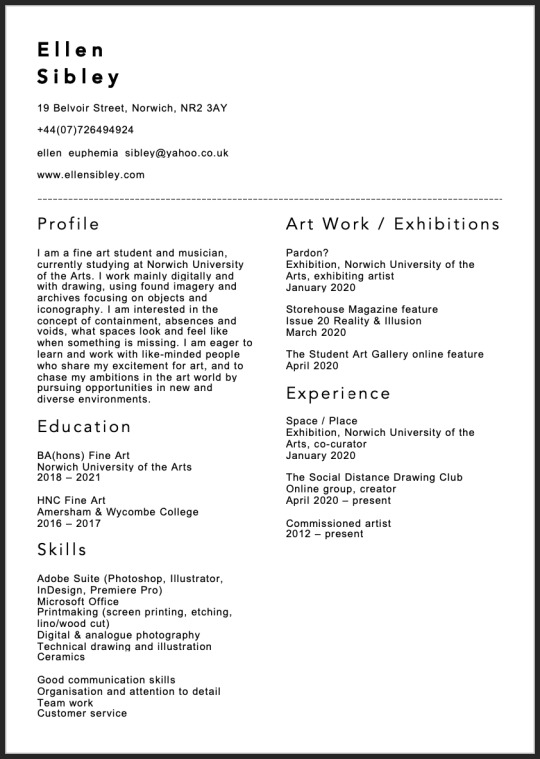
Skills and Strengths analysis
I have always pride myself on being a fast-learner with an appetite for knowledge and experience. When I am faced with a new process or tool, I am eager to master it and throw myself into doing so. I pick up skills quickly, forever looking ahead to the next new thing. My strengths lie in my attention to detail, ability to navigate briefs and tasks with originality and precision and my communication/teamwork skills. Customer service is also something I have a lot of experience with from my work within the service industry. In regards to my technical and creative skills, I have used Adobe programmes such as Photoshop, Illustrator and Premiere Pro profusely since secondary school and consider myself to be at an industry level standard. I have not only used them within commissioned work since 2015, but tutored others on using such programmes as well. I prefer utilising the simpler tools in Photoshop in my own work and explore how they can change an image, but am well-versed in the programme as a whole. I consider myself to be skilled in other creative practices such as printmaking, drawing and ceramics, having taken many classes and engaged with the processes a lot throughout my education.
1. Working in a team: 7/10 2. Showing attention to detail: 9/10 3. Flexibility and adaptability: 8/10 4. Meeting deadlines and delivering a brief: 7/10 5. Resilience: 7/10 6. Responding to feedback: 8/10 7. Demonstrating a positive attitude: 7/10 8. Interpreting a brief: 8/10 9. Handling customers and clients: 9/10 (service industry) 10. Communicating with colleagues and partners: 7/10
Competition Entry

ABOUT THE LUMEN PRIZE
The Lumen Prize for Art and Technology is a global competition that celebrates the very best art created with digital processes. Our annual juried competition draws entries from artists worldwide and has given away more than US$80,000 in prize money since its launch in 2012. The competition is run by Lumen Art Projects, a not-for-profit based in the UK, which provides opportunities for longlisted, shortlisted and winning Lumen artists through its links with cultural venues, festivals and museums globally.
THE JUDGING
The judging of the Lumen Prize is done in two stages. The longlist is determined by our International Selectors Committee of curators, art specialists and academics. This longlist is then reviewed by an eminent Jury Panel, who select the finalists and winners.
2020 Jury Panel
Christiane Paul, Adjunct Curator, Whitney Museum, New York City
Ben Vickers, CTO, the Serpentine Galleries, London
Foteini Aravani, Digital Curator, Museum of London
Melanie Lenz, Digital Curator, Victoria and Albert Museum, London
Nathan Ladd, Assistant Curator, Tate Britain
THE AWARDS
The Lumen Prize has a total prize fund of $11,500 presented across nine award categories.
Gold Award – $4000
Moving Image Award – $1000
Still Image Award – $1000
3D/Interactive Award – $1000
XR Award – $1000
The BCS AI Award – $1000
The Global South Award – $1000
The Nordic Award – $1000
The Photomonitor Student Award – $500
There will also be the opportunity to be curated into our Directors Showcase at The Cello Factory, London from 28-31st October, 2020.
THE AWARDS PROGRAMME
All longlisted and shortlisted artists are eligible to take part in a range of opportunities as part of our awards programme.
This programme includes an Awards Ceremony at the Barbican Centre for Performing Arts, London on 22 October 2020 followed by a networking event with Jack Addis, Director of Lumen Prize. The following day is an Artists’ Meet-up with Carla Rapoport, Lumen’s Founder and Executive Director and Artists Talks at IBM Southbank, London. There will also be the opportunity to be curated into our Directors Showcase in London in October.


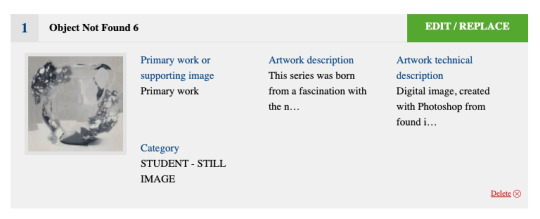
^ 1x work submitted to the Lumen Prize for Art & Technology

ABOUT THE TRINITY BUOY WHARF DRAWING PRIZE 2020
The Trinity Buoy Wharf Drawing Prize is celebrating its 25th annual exhibition in 2020. In this anniversary year, we are delighted to announce two exciting changes to the Trinity Buoy Wharf Drawing Prize as follows:
The exhibition and awards will be open to applications by emerging, mid-career and established artists and makers from the UK, and internationally; and
The Working Drawing Award, will have an online entry process only and a dedicated expert selection panel, alongside the main entry process and selection panel for the Trinity Buoy Wharf Drawing Prize.
THE 2020 EXHIBITION
The annual exhibition of around 65 drawings is selected by a panel of distinguished selectors. There will be a separate display of the Working Drawing Award included within the overall exhibition.The Trinity Buoy Wharf Drawing Prize 2020 exhibition will be launched at Trinity Buoy Wharf in London in September 2020 before touring to venues across the UK. A fully illustrated publication will be produced to accompany the exhibition. Shortlisted artists and makers will be invited to the Exhibition Launch and Awards Announcement at Trinity Buoy Wharf, London on 23 September 2020 held at:
The Chainstore Trinity Buoy Wharf 64 Orchard Place London E14 0JY
trinitybuoywharf.com
PRIZES
First Prize – £8000
Second Prize – £5000
Student Award – £2000
Working Drawing Prize – £2000
TRINITY BUOY WHARF DRAWING PRIZE 2020 SELECTORS
Ian McKeever RA, Artist
Frances Morris, Director of the Tate Modern
Sophia Hao, Curator and Writer, Cooper Gallery, University of Dundee
The Working Drawing Award 2020 will be selected by:
Alan Baxter CBE, Engineer & Urban Design
Sir Ian Blatchford, Director of the Science Museum
Piers Gough CBE RA, Architect
Sophie McKinlay, Director of Programme at V&A Dundee
Please see the Working Drawing Award Pages for details of how to enter for this award.
THE EXHIBITION SELECTION PROCESS IN 2020
The Trinity Buoy Wharf Prize 2020 exhibition is selected from original drawings. Please note that there is a separate process for the Working Drawing Award (tbwdpworkingdrawings.artopps.co.uk/).
The two-stage submission process is a temporary measure for the Trinity Buoy Wharf Drawing Prize 2020 only, due to current public health restrictions.
The Selection Panel will choose a longlist of works from the online entries. Longlisted drawings are then required to be submitted via regional Collection Centres or directly to Trinity Buoy Wharf in July 2020 for the final selection process. If you are entering from outside the UK and your work is longlisted, you will be contacted and advised of the details of the later shortlisting stage for international submissions.
Drawings shortlisted for the exhibition and awards will be announced after the final selection in July 2020.
The Trinity Buoy Wharf Drawing Prize and Trinity Buoy Wharf Working Drawing award winners will be announced in September 2020.




^ 1x work submitted to the Trinity Buoy Warf Drawing Prize
0 notes
Photo




(via Hortus Conclusus : A Serious Place)
Hortus Conclusus : Enclosed GardenOften translated as meaning “a serious place”To construct a contemplative room, a garden within a garden.Pavilion as both a monumental physical structure and as a site of emotional encounter.
With a refined selection of materials he has created a contemplative space that evokes the spiritual dimension of our physical environment, in so doing he is successfully emphasising the role the senses and emotions play in our experience of architecture. (Zumthor 2011: 15) Enclosed all round and open to the sky.A garden in an architectural setting.“ Sheltered places of great intimacy where I want to stay for a long time.” (Zumthor 2011: 15) Every plant name listed here evokes a distinct image; with each of them I associate specific lighting, smells and sounds, many kinds of rest, and a deep awareness of the earth and its flora. A garden is the most intimate landscape ensemble I know of. In it we cultivate the plants we need. A garden requires care and protection. And so we encircle it, we defend it and fend for it. We give it shelter. The garden turns into a place. There is something else that strikes me in this image of a garden fenced off within the larger landscape around it: something small has found sanctuary within something big.(Zumthor 2011: 15) Illustration of “Orchard” from Bible of Wenceslaus IV,Vienna, Austrian National Library Depicts in the manner of an illuminated manuscript, the husbandry and community of the medieval workforce in the secure and sheltered space of a walled garden. This pastoral craft/gathering is evocative of Zumthor’s Hortus Concluses. Working with ones hands, with the earth in sheltered spaces of a pastoral community. Zumthor underscores this pastoral setting when he places a pavilion at the centre of the garden; he talks of future meeting there, of looking forward “to the natural energy and beauty of the tableau vivant of grasses, flowers and shrubs. I am looking forward to the colours and shapes, the smell of the soil, the movement of the leaves.” (Zumthor 2011: 15) The Vintner’s Luck, Elizabeth Knox.Tasting the soil in the wine, the soil and the wine are of the same substance, from the same locality; they are bonded together by the landscape. Gardens Are Like Wells: Alexander KlugeInside every person (however serious or playful) lies an “enclosed garden” Monasteries in medieval Europe were wells in which the clear waters of antiquity mingled with the dark waters of faith. At the centre of these monasteries was a garden, the most important part of which was enclosed. It was here that the most beautiful plants and medicinal herbs were concentrated. (Kluge 2011: 19) Interestingly Kluge notes that these gardens were not everyday places, they were “timeless” because they were not subject to the general daily rituals of monastic life. These gardens were dedicated to the Blessed Virgin, but exposed perhaps to other texts, Homer, Ovid or the Gnostics. This relationship of literature finding a place of contemplation in the enclosed garden speaks perhaps of an “innerness”, an ability to unite mind and eye in the confusing realities of our age. Civilisation and societies need ground that is uncultivated, gaps that are not subject to the principle of unity, something that is sufficient unto itself, which we do not consume: a sacrifice. Cities need spaces of piety. (Kluge 2011: 21) “We need places in which we can engage in acts of mourning” Richard Sennett(Sociologist) Gardens of Information: DCPT (Development Company for Television Programmes) Using the emblem of the Hortus Conclusus/The Enclosed Garden to stand for the relationship between the barren wastes on the one hand, and the happy isle on the other. “To rescue facts from human indifference” “To make gardens out of raw material and the bare bones of information.” “A precursor of individualism, but has unmistakable traits in a way individualism never can.” (Kluge 2011: 21) Spatial Practices for the Next Millennium. Forming relationships not through superstructures, concepts or societies, but through inclusive structures/practices and localities. The Hortus Conclusus could stand for this type of concentration of identity (an inquiry, a person and a practice) within an intimate setting or situation.
2 notes
·
View notes
Text
KIND commits to exclusively source almonds from Bee-friendly farms
KIND has recently signed the Ellen MacArthur Foundation’s New Plastics Economy Global Commitment, They aspire to reach 100% recyclability, compostability, or reusability across all its plastic packaging by 2025, whilst also reducing its use of single-use plastic overall
KIND Healthy Snacks (KIND) has announced its commitment to become the first snack company to exclusively source its almonds from bee-friendly farmland across the globe by 2025. Almonds are the lead ingredient in most of KIND’s 80+ products and the company’s number one ingredient by both volume and spend.
By collaborating directly with farmers, suppliers, researchers and other leading brands, KIND aims to significantly expand the usage of bee-friendly practices amongst almond farmers.
As a baseline, KIND is expecting its almond suppliers to reserve 3-5% of their farmland for dedicated pollinator habitat to support bees, butterflies and other pollinators. In addition, KIND has worked with its suppliers to eliminate any use of neonicotinoids and chlorpyrifos, two pesticide treatments that are thought to be harmful to pollinators.
“We have been energised and inspired by the leadership demonstrated by some of our peers and partners to more actively protect pollinators. We are also incredibly proud that many of our almond suppliers have led the way, proving that incorporating more bee-friendly practices is not just good for pollinators, but also good for business,” said Daniel Lubetzky, KIND’s Founder and Executive Chairman.
“But we can do more to make these practices central to the way the almond industry does business. Whilst we know we can’t do it alone, we are proud to lend our voice and scale to call for this much-needed change.”
California currently produces the vast majority of the world’s almonds, with nearly 1.53 million acres dedicated to almond orchards. However, only a small fraction of that acreage – estimated at less than 20,000 acres – is verified as bee-friendly.
In setting this ambition, KIND, which sources 1-2% of the world’s almonds, hopes to significantly increase the availability of almonds grown on bee-friendly farmland. Bees are critical to the production of a variety of nutritious foods, pollinating about a third of the food supply.
“This commitment from KIND to increase pollinator habitat on almond orchards will provide substantial, long-term environmental benefits for soil health, water retention and regional biodiversity in California’s Central Valley,” said Daniel Kaiser, Director of Conservation Strategies at Environmental Defense Fund. “This initiative is just the type of supply chain signal that can facilitate farmer adoption of practices that will bolster the resilience of their orchards.”
Research suggests a variety of factors are impacting bee health, including poor nutrition due to unvaried habitats and pesticide exposure. In the last several years, interest in protecting pollinators has gained significant momentum amongst the food industry, including the creation of farm-level verification and certification programmes that help to increase pollinator habitat and restrict pesticide use.
As the marketplace for bee-friendly almonds further develops, KIND will rely on a hybrid approach, using both the currently available certification and verification programmes, as well as exploring new methods, to validate its suppliers’ practices.
“KIND’s global commitment to ensure all their almonds come from pollinator-friendly farms shows that industry can make substantial steps to protect pollinators at scale,” said Simon Potts, Professor of Biodiversity and Ecosystem Services at the University of Reading, UK and co-chair of the Intergovernmental Science-Policy Platform on Biodiversity and Ecosystem Services’ Global Pollinator Assessment. “This move will not only benefit the environment but also growers and consumers.”
The KIND Foundation will also make a US$150K/£114K investment in the Williams Lab at the University of California, Davis to help answer critical questions about bee health and track the efficacy of these farm-level improvements.
“As an agricultural community, we need to make real change to ensure long-term bee health. KIND’s commitment to bee-friendly practices in its supply chain is the sort of actionable approach that will move the dial toward more sustainable practices industry-wide,” said Neal Williams, Professor of Entomology at the University of California, Davis.
“To pair, this commitment with support from The KIND Foundation for research is forward-looking and shows an understanding of how to promote further practical innovation to benefit bees.”
Water scarcity is another key issue facing California almond farmers. The almond farmer community in the United States, led by the Almond Board of California, has successfully reduced the amount of water used to grow a pound of almonds by 33% in the last two decades and is committed to further reducing that figure by an additional 20% leading up to 2025.
KIND’s suppliers and their farmers have set new standards for water conservation through sophisticated irrigation systems and water management technologies used to promote healthy growth and minimise tree stress. These practices help to increase yield at harvest, use water more efficiently and identify risk to crops in real-time.
This announcement coincides with two other milestones for KIND. The company recently signed the Ellen MacArthur Foundation‘s New Plastics Economy Global Commitment. In line with the Foundation’s vision for a circular economy for plastic, KIND will aspire to reach 100% recyclability, compostability, or reusability across all its plastic packaging by 2025, whilst also reducing its use of single-use plastic overall.
Additionally, by the end of 2020, KIND will purchase enough renewable energy credits to cover their US offices and manufacturing sites and in 2021 will begin to integrate renewable energy sources into its direct operations.
The article KIND commits to exclusively source almonds from Bee-friendly farms appeared first on World Branding Forum.
from WordPress https://glenmenlow.wordpress.com/2020/08/26/kind-commits-to-exclusively-source-almonds-from-bee-friendly-farms/ via IFTTT
0 notes
Text
#residential care home in brighton#bexhill residential care homes#orchard house residential care home#residential care homes uk#24hr care home inbexhill-on-sea#uk
0 notes
Text
Windward House, Gloucestershire
Windward House Gloucestershire, Modern Home Photos, Alison Brooks Architecture
Windward House, Gloucestershire, UK
13 Aug 2020
Windward House
Location: Gloucestershire, South West England, UK
Design: Alison Brooks Architects
Windward House in Gloucestershire
Alison Brooks completes a monumental house and living art gallery high above the Wye Valley
13th of August 2020 – Alison Brooks Architects’ latest house is set atop the highest point in Gloucestershire, overlooking the Wye Valley. The result of a ten-year collaboration, this new house and landscape project celebrates domestic living amongst an extraordinary collection of Indian and African Tribal Art. It includes the restoration and conversion of a late Georgian farmhouse to a Gallery and office, a new fully accessible ‘West Wing’, a sequence of walled gardens and a new Pool Gallery.
Set in an Area of Outstanding Natural Beauty, Brooks likes to describe Windward House as ‘a gallery with people living in it’, where the owners’ art collection are like friends and family sharing the spaces of daily life. The house is also a journey. Intertwining old and new, its sequence of rooms, buildings and landscapes tell a story from the 18th C to today. Light is sculpted and funnelled from above and walls unfold, framing epic views across the meadows and forests to the Severn River. Art works from the collection animate this journey occupying plinths, ramps, niches and staircases.
The restored Windward Farmhouse acts as an historic threshold. Mirror-polished steel cladding announces its transformation, dissolving the mass of the original building’s stone walls in reflections of the garden. Beyond the farmhouse the new West Wing is a shadowy, quiet backdrop; its dark tones and cladding pattern inspired by the nearby Forest of Dean. The entire right half of the farmhouse has been opened to create a triple height gallery. A walnut-panelled mezzanine and wood-burning fireplace echo the collection’s material qualities.
Seen from the south, the two-storey West Wing is set back, low-lying and partially embedded in the hillside, deferring to the 18th farmhouse. The volume of the extension is positioned to interlock with the existing stone building. This creates intimate courtyard spaces between high garden walls sheltered from the pervasive wind. Serving as the owner’s primary living space, the West Wing is a variation of the atrium house typology and a nine-square structural grid, undulating in three dimensions to echo the topography of adjacent meadows. A deep first floor roof terrace takes in the spectacular view to the south; the double height living room overlooks a sloped pool of grasses. It’s gently sloping green roofs are planted with native species of wildflowers.
Inside, the West Wing is filled with light, open to the landscape and adapted to the needs of later life. Its sequence of double height spaces offers a variety of light conditions and spatial qualities to accommodate sculptures, masks, shields, temple doors and paintings collected over four decades.
The West Wing’s pigmented concrete floor was conceived as a moulded terrain upon which discreet objects rest: stone grotto, timber-clad service ‘pod’, steel staircase, looped plinths. Living, dining and cooking areas flow into each other and onto exterior terraces. The plan revolves around the concrete and marble kitchen island reflecting the owners’ dedication to entertaining and cooking for friends and family. Washed with light from above, this vantage point enjoys both visual connection to the first-floor gallery and panoramic views to the four cardinal directions. Gardens, seasons and weather stage a continuously changing scenography.
Brooks’ ‘Stair for 100 Objects’ is an installation in itself. Each tread is a 6mm thick ‘loop’ horizontally cantilevered from the stair’s central spine, a vertical steel grillage with 100 cells to display the owner’s treasured small works. Moving upward into light, the stair leads to a first floor gallery, bedrooms, study and a roof terrace. Every space offers perspectives both outward and inward, through rooms and across gardens.
The Pool Gallery is the culmination of the journey. Approached via a garden path, it is a stone-walled courtyard open to the sky. One wall has been ‘thickened’ to become a building containing changing facilities, guest accommodation, display space and storage. A quiet retreat for art, guests, and grandchildren, the pool gallery celebrates local traditions of field stone masonry and precision carpentry.
Surrounding Windward House are 8.5 hectares of land. A large portion of this is wildflower meadow and orchards that are part of the owners’ long-term programme to restore and optimise the ecological value of the whole area. The landscape strategy includes ongoing repair and renewal of 2.5km of hedges with pollen-rich species and the planting of 2,500 trees.
The Client, David Clifford comments: “Working with Alison Brooks and her project architects has been exhilarating. It has been a tremendous learning process. Our first lesson was that modern houses are designed from the inside. For we who had always lived in Georgian or Victorian houses this was a novel idea.”
Project Areas
Site (incl buildings): 2.74 ha Garden (not incl. buildings): 2.68 ha
Original House GIA: 220 sqm West Wing GIA: 309 sqm Pool House GIA: 94 sqm Total GIA: 623 sqm
Sustainability Summary
The strategy for Windward House was based on reducing energy consumption, excellent thermal envelope and avoiding the use of solid fuel heaters. Therefore, the house does not consume any energy from solid fuels: Ground Source Heat Pumps (GSHP), Air Source Heat Pumps (ASHP)s and Solar Thermal Panels provide the heating and hot water requirements. Electricity consumption is reduced by solar photovoltaic panels.
The main house has a GSHP from Ecoforest, a model which was designed to contain the latest advances in efficiency and economy. Also, the restored farmhouse has solar thermal panels fitted to the roof. The West Wing is an extensive green roof reducing rainwater runoff, and has been planted with native wildflowers to support local biodiversity.
The pool pavilion is served for heating and hot water by an ASHP and a separate ASHP warms the swimming pool water. The swimming pool is black which provides 4ºC advantage over the conventional blue pool and the cover on the pool is designed to act as a solar thermal transmitter. In addition, there is a 4.5kWp solar PV system on the roof of the pool pavilion. Lastly, natural ventilation is provided to mitigate overheating.
Windward House Gloucestershire – Building Information
Project Team
Client: David and Jenny Clifford Architect: Alison Brooks Architects Alison Brooks, Wanja Wechselberger, Wei Shan Chia, Sophie Bates, Christopher Smaill, Sara Yabsley, Alex Nicholls, Christopher Curran, Antonio Callejon
Structural Engineer: Akera Engineers Environmental / M&E Engineers: Peter Deer & Associates Environmental Consultant: Bearwood Associates Garden Designer: Stoney & Janson Quantity Surveyor: Measur Construction Consultants West Wing and Windward House Gallery Contractor: E G Carter & Co Ltd Landscape & Pool House Contractor: Barker & Barker Landscape Contractor: Trunkarb Tree Surgery Environmental Co-ordinator: Helena Ronicle Joinery: Smith & Choyce Ltd. Glazing: Fineline Aluminium
About Alison Brooks Architects
Since 1996, the architectural approach of Alison Brook’s practice has emerged from broad cultural research, with each project expressing a specific response to place, community and landscape. Their approach embraces the development of authentic solutions for buildings and urban developments, each with a distinct identity that has led to the practice gaining recognition as international design leaders.
This has produced a portfolio of projects of distinct identity encompassing urban design, housing, education and buildings for the arts. The work of Alison Brooks Architects has attracted international acclaim for its conceptual rigour, sculptural quality and ingenious detailing, best exemplified by the spectacular new Cohen Quadrangle for Exeter College, Oxford. The practice’s growing body of public work includes The Quarterhouse Performing Arts Centre, Folkestone and The Smile, the hugely successful Landmark Pavilion for the 2016 Design Festival which received over 30,000 visitors in just four weeks.
ABA has been selected to contribute installations for the Venice Biennale four times, including ReCasting in 2018, and Home Ground in 2020. Our largest project to date, The Passages in Vancouver, is a one million square meter mixed use city block in Vancouver. We continue to develop opportunities to design projects of cultural and urban significance internationally, and at home.
Our approach has led us to win national and international awards including Architect of the Year and Housing Architect of the Year 2012. In 2013 ABA were shortlisted for the RIBA Stirling prize for Newhall Be. The scheme also received RIBA regional and national awards and was Supreme Winner at the 2013 Housing Design Awards.
Alison Brooks Architects is the only UK practice to have won the RIBA’s three most prestigious awards for architecture – the Stirling Prize for Accordia Cambridge, the Manser Medal and the Stephen Lawrence Prize. Alison Brooks was awarded AJ Woman Architect of the Year 2013.
NOTES ON THE ARTWORK:
Staircase for a hundred objects (photos 27-30)
The piece in the single open niche is a cup from the Kuba people now in the Democratic Republic of Congo. It is a cup for drinking palm wine. At the court of the Kuba titleholders, drinking vessels were a vital accessory of great symbolic value. This ornately carved wooden cup combines human and animal forms to communicate ideals of refinement and power. To the right of the Kuba cup is a pottery pipe from the Shilluk, one of the large minority ethnic groups of South Sudan. To the left of the Kuba cup is a Chi Wara from the Bambara people of Mali. The Chi Wara is often represented as a Roan Antelope with an almost human face, but also takes shapes of other creatures and emblems of farming.
The Main Room in the Pool Pavilion (photo 20)
Against the facing wall is a pair of two fine doors from a hunting lodge in the Indian State of Rajasthan. These date from the 15th/16th Century and are made from an exceptionally hard and heavy wood as well as iron and brass. On each side of the doors are a pair of masks, one black, one white. These are Punu masks from Gabon. Barely visible on the left-hand wall is a large oil painting by Josef Herman executed in 1962/63. It shows a mother and child. The dark object to its right is a very unusual piece from the Luba people of the Congo. This is probably late-19th Century and the mother and child carved are the Madonna and Jesus. Christian objects from Africa created on this era are rather few. The large rug is from Swaziland. The colours are those of the Karoo, the very dramatic semi-desert of Southern Africa. The rug was made at the studio of Coral Stephens.
The Ramp To The Main Living Area (photo 33)
On a far wall is a large portrait by Josef Herman “Miner With a Cup of Tea”. The miner’s face resembles an African mask. In 1938 Josef left Poland; first for Brussels then Paris and then to Glasgow and London. In 1944 he moved to Ystradgynlais, a small mining community in Wales. Two more of Josef’s paintings, another of a miner and the other of peasant women in Mexico, are on the left-hand wall. The most unusual work in this area is the one closest on the left-hand wall. The artist was Tadek Beutlich for whom The Guardian published a full-page obituary in 2011.
Upper Gallery (photo 37) On the left the reflection of a window in Two Whiting, a print by Patrick Caulfield. On the right a part of an Ethiopian oil painting showing a narrative from The Old Testament. In the centre is a dramatic helmet mask reminiscent of an Elisabeth Frink sculpture. The mask is another from the Congo, this time from the Kuba people.
Lower Gallery (photos 38-39)
The dominant piece here is the 15 panelled door, with narrative carving in each panel. This is from in or around the Indian State of Madhya Pradesh in the centre of the sub-continent. It was carved by the Gond tribal people. In Bhopal in Madhya Pradesh there’s a magnificent, recently constructed museum dedicated to the hitherto neglected work of the Tribal peoples of India. On the left is a white Fang mask, formerly in the collection of Josef Herman and on the right is a very good example of a granary door from the Dogon tribe of Mali.
Alison Brooks
Windward House, Gloucestershire information / images from Alison Brooks Architects
Location: Gloucestershire, England, UK
Gloucestershire Property
Gloucestershire Properties – Selection
Glass Villa on the lake, Lechlade Design: Mecanoo architecten photo : Blue Sky Images Glass Villa on the lake, Lechlade
Outhouse, Brockweir photograph : Charles Hosea Gloucestershire Luxury House
Private House Design: Found Associates photo © David Russell House in Gloucestershire
Underhill House, Cotswolds Design: Seymour-Smith Architects images from architect Underhill House
Gloucestershire Architecture
Gloucestershire Buildings – Selection
Gloucestershire Buildings
Forest Green Rovers Eco-park Competition Design: Zaha Hadid Architects image courtesy of architects Forest Green Rovers Eco-park Gloucestershire
Filton Airfield Masterplan, South Gloucestershire Design: Allies and Morrison ; Landscape design: Grant Associates image courtesy of architects Filton Airfield Masterplan
University of Gloucestershire Business School Design: Austin-Smith:Lord, Architects image courtesy of architects University of Gloucestershire Business School
Gloucester Services photograph : Paul Miller RIBA South West Awards 2016
Montpellier Chapter, Cheltenham Design: make architects Montpellier Chapter Cheltenham
Cheltenham’s Art Gallery & Museum – new building development Berman Guedes Stretton Gloucestershire museum building
Gloucester Language Immersion Centre
Maggies Cotswolds
Cheltenham Ladies’ College Building
County Architecture near to Gloucestershire
Buckinghamshire Buildings
Oxfordshire Buildings
Wiltshire Buildings
English Architect
Alison Brooks Architects
Comments / photos for the Windward House, Gloucestershire page welcome
Website: Gloucestershire
The post Windward House, Gloucestershire appeared first on e-architect.
0 notes
Text
Egg Freezing Centres In Raffles place | ElaWoman
What is embryo freezing?
Embryo freezing is a clinical procedure in which an embryo (egg fertilized with sperms) is preserved in the liquid nitrogen in a laboratory. The temperature that is utilized for the protection of the embryo is -196 ranges Celsius. This ensures that the embryos remain in a suspended animation state for the next few years. In most of the international locations, the embryo freezing is allowed for the term of at least five years. But in some of the cases, the embryo maintenance is done for even 10 years. It is visible in numerous instances that embryo freezing is a success, irrespective of the time period of the renovation of embryo.
Embryo freezing guarantees that the embryos may be preserved in a healthy and possible way for a long time.
Only high first-class embryos are preserved for the satisfactory consequences.
The embryos are frozen and stored in the safest way on the fertility centres and garage banks.
Benefits of Embryo Freezing
Frozen embryos can be applied after the failed cycle of IVF. The girl does now not want to undergo the techniques of ovarian stimulation and egg retrieval once more and she could have frozen embryo transfer at once.
Frozen embryo transfer can also be accomplished within the cases whilst the couple wants to have their 2nd baby after having the primary one with the IVF.
Couples also can get their embryo frozen if they're making plans to have a child in the later years of existence. This guarantees that they do now not want sperm donors or egg donors in the destiny. In such cases, pregnancy can occur in a simple way within the later years without the requirement of huge fertility treatment.
Disadvantages of Embryo Freezing
Embryo freezing includes treatment which can have side consequences over the time. Therefore, right care is taken whilst administering the medicine to fight the aspect effects of each.
Ovarian hyperstimulation syndrome can arise in the sufferers undergoing embryo freezing.
Procedure of Embryo Freezing
The system of embryo freezing includes positive steps, which want to be observed with care to make certain a secure and effective embryo freezing process.
The gynecologist will ask you to ensure that you take sure precautions for at the least a week earlier than the technique of egg retrieval starts off evolved. You want to follow them in order that satisfactory embryos can be organized from the eggs retrieved at some stage in the manner.
The eggs from the female patient are fertilized in conjunction with the sperm of the companion. This ends in the formation of embryos.
The embryos are left to mature for 3-4 days before they're saved for freezing.
One of the nice capabilities of embryo freezing manner is that the fulfillment costs of embryo thawing are quite considerable at 80-90%. So, you can see that maintenance of embryos is a good deal useful for the couples who need to plan babies inside the later years in their existence.
Embryo freezing affords the excellent viable consequences to the couples who need to be at the safer side concerning starting or expanding their own family. Single embryo transfers are a whole lot popular and the fulfillment quotes of IVF are also high in frozen embryo transfer.
Noel Leong Fertility and IVF Centre
Noel Leong Fertility and IVF Centre is a Gynecology and Obstetrics sanatorium. It is positioned in Novena, Singapore. The offerings offered on the centre here consist of Infertility assessment, In Vitro Fertilization (IVF), Intracytoplasmic Sperm Injection (ICSI), Gamete Intrafallopian Tube Transfer (GIFT), Zygote Intrafallopian Transfer (ZIFT), Microsurgical Epididymal Sperm Aspiration (MESA), Testicular Sperm Aspiration (TESA), Assisted Hatching, Blastocyst Transfer, donor sperm and egg programmes. The hospital is visited through pinnacle gynecologists and obstetricians like Dr. Leong Kwai Yin Noel. Dr. Leong has over 4 a long time of experience inside the discipline of obstetrics, gynecology and infertility experts. The timings of Noel Leong Fertility and IVF Centre are Mon to Fri, 8:00 AM-1:00 PM, 2:00 PM-5:30 PM and Sat, eight:00 AM-12:30 PM and it is one of the best Egg Freezing Centres in Raffles place.
Raffles Fertility Centre
Raffles Fertility Centre is a health facility constructed around the needs of our patients, offering specialist offerings mixed with a number of the most superior scientific generation. A tertiary care sanatorium, it's miles the flagship of the Raffles Medical Group, a main non-public healthcare company in Singapore and Southeast Asia. Raffles Hospital presents a sanctuary for our sufferers for relaxation and healing. Our interior and panorama designs are geared toward growing an aesthetically pleasing and tranquil surroundings. Our devoted crew of specialists and staff are dedicated to giving our patients our nice care and attention. Raffles Hospital is JCI-authorized on the grounds that 2008 and it is one of the best Egg Freezing Centres in Raffles place.
Raffles Fertility Centre offers 24-hour emergency offerings, family treatment offerings, health screening and a extensive range of multidisciplinary specialist clinics. It is ready with superbly appointed wards, day surgical procedure, angiography suites, transport suites, running theatres, intensive care unit, and neonatal extensive care unit. It additionally has its personal radiology, scientific laboratory, pharmacy, dietetics, rehabilitation and Traditional Chinese Medicine departments.
Theresa Womens Clinic
Theresa Womens Clinic is a Gynaecology and Obstetrics Clinic. It was installed in 1990. Theresa Womens Clinic is located in Ang Mo Kio, Singapore. The services supplied at the clinic encompass Hysterectomy, Pap smear, Contraception Advice, Colposcopy exam, Polycystic Ovarian Disorder (PCOD) treatment, Gynecology Laparoscopy, Well girl healthcheck, Menopause advice, and Human Papilloma Virus (HPV) Vaccination services. The hospital is visited via Dr. Cheng Mei Ling Theresa Nee Wong, Obstetrician and Gynecologist. Dr. Cheng specializes in Infertility evaluation, IVF, IUI, PCOD treatment and Hysterectomy tactics. Click at the map to get the directions to attain Theresa Womens Clinic and it is one of the best Egg Freezing Centres in Raffles place.
Peter Chew Clinic For Women
Peter Chew Clinic for Women for ladies turned into set-up in 1980. We are placed at Gleneagles Medical Centre Prior to putting in place his own private practice, Dr .Chew become Senior Lecturer of the Department of Obstetrics & Gynecology of the University of Singapore and consultant obstetrician and gynecologist in Kandang Kerbau Hospital, due to the fact that 1970. In extra to affected person care and scientific paintings, he was actively concerned inside the coaching and training of undergraduate medical college students and postgraduate doctors, and project scientific and academic research.
Peter Chew Clinic for Women is a Gynecology and Obstetrics Clinic. It is located in Tanglin, Singapore and changed into established in 1980. The offerings presented at the sanatorium are Pre-being pregnant counselling, Infertility assessment, In Vitro Fertilization (IVF), Intrauterine Insemination (IUI), Miscarriages treatment, Antenatal care and transport, Ultrasound experiment, Hormone alternative treatment (HRT), Hysteroscopy, Laparoscopy, Abdominal and Vaginal hysterectomy, and Artificial insemination tactics. Dr. Chew Chee Tong Peter practices in this health center. Click on the map to get the guidelines to go to Peter Chew Clinic.
Lee Womens Clinic Surgery Pte Ltd
Lee Womens Clinic Surgery Pte Ltd is a Gynecology and Obstetrics centre. It is placed in Orchard, Singapore. The offerings supplied by the clinic consist of Infertility evaluation, In Vitro Fertilization (IVF), Intrauterine Insemination (IUI), Hysterectomy, Gynecology issues treatment, Immunization, Contraception Advice, HPV Vaccination, Polycystic Ovarian Disorder (PCOD) treatment, Colposcopy Examination techniques. The health facility is visited by Dr. Michele Lee Sook Ling. She has nearly a decade of revel in within the discipline of obstetrics and gynecology and makes a speciality of Infertility assessment, IVF, IUI, and Normal vaginal shipping strategies. Click at the map to get the directions to attain Lee Womens Clinic Surgery Pte Ltd.
Lee Women's Clinic & Surgery is a Gynecology/Obstetrics Clinic in Orchard, Singapore. The health center is visited by doctors like Dr. Lee Sook Ling Michele. The timings of Lee Women's Clinic & Surgery are: Mon-Fri: 08:00-17:00 and Sat: 08:00-14:30. Some of the services supplied with the aid of the Clinic are: Hysterectomy (Abdominal/Vaginal),Colposcopy,Infertility Treatment,Hysterectomy and Gynae Problems etc. Click on map to find guidelines to reach Lee Women's Clinic & Surgery.
For more information, Call Us : +91-8929020600
Visit Website : Elawoman
Elawoman contact
Ela Facebook Ela Twitter Ela Instagram Ela Linkedin Ela Youtube
0 notes
Text
Spring Cleaning: A Laundry Room Transformation
Chloe Mackintosh from Boxwood Avenue renovated her 1964 home’s laundry room just in time for spring! Read more about how Chloe transformed her laundry room into a beautiful, functional space below!
Spring Cleaning: A Laundry Room Transformation
Our home was built in 1964, and even though we have remodeled much of the house, our laundry room had never been touched. The original linoleum and orange colored wood door was a terrible juxtaposition to the rest of our house. I’m not sure many people enjoy doing laundry, but having a dreary laundry room did not help the fact that laundry is my least favorite chore. The small room in the back of our house sat tucked away, swept under the renovation rug so to speak.
This year we decided to tackle the laundry room in partnership with The Home Depot. This renovation came just in time for spring cleaning, giving me the perfect place to store and organize all of our cleaning supplies! I am so incredibly grateful for this transformation. It has made a larger impact in our home than I ever could have imagined. The laundry room was a space we didn’t use much. Now, having a functional (and beautiful) room allows me to keep up with the rest of the house with ease.
Whether you have a large home or a small home, using every square foot to its fullest capacity is something I think we all strive to do! We are now able to store all of our cleaning supplies (I love Clorox clean-up spray and, of course, our Swiffer!), spare linens, and other necessities in the room, plus I have turned the sunlit countertop into a small potting area for my seedlings to begin to grow.
This wasn’t a space we really planned on remodeling, but doing so has made our home that much more functional. Here are all of the details!
Since we moved into our house, I have envisioned a door in place of the window in our laundry room. We have a small apple orchard on that side of the house, and having a door here made so much more sense than a window. It would allow me to access the trees (and my goats’ pen) so much easier. Plus, I knew it would be an easy swap because the window size was standard door width.
You can see from the photos that a door here just makes sense, can’t you? If you have a space in your home where you’d like to add a door – know that it isn’t a major process! Likely, there is already a header in place, and a hole in the wall leading to the exterior, making it a fairly easy improvement.
We started by removing the closet space, existing cabinets, and a small drip-dry closet. The drip-dry closet was a huge amount of wasted space, and the existing closet was constantly cluttered. This is the second time I’ve opted to remove a closet in a home. And each time, I love the result. Closets can become wasted square footage very easily. The space can often be utilized in a better way by adding cabinets or built-in shelving. By removing the closet in our laundry room, we were able to add an additional wall of cabinetry, doubling the storage in the room!
Once the existing cabinets were out, we removed the linoleum floor, and were left with a fairly large room for me to create my dream laundry room!
Home Depot’s quick-ship cabinets are ready-built and were the perfect fit for this project. The shaker style matches that in our kitchen and the color is spectacular. I almost went with the white color, but opted for gray, and am so very glad I did. The cabinet color combined with the Martha Stewart Bedford Nickel cabinet hardware is the perfect variation of gray tones! The color is just right in every way. It would work well in any style home. I couldn’t be happier with it!
We added an apron front sink from Kohler, which is something we also have in our kitchen. It is such a classic style, and so incredibly dreamy. I initially thought I might like a bridge faucet in the laundry room, but we ended up going with a semi-professional faucet from Kohler, which is exclusive to The Home Depot. When I first opened the box I was so surprised by the quality for the price. This faucet seems like it should have cost thousands of dollars! It is very industrial, yet designed beautifully. When form and function combine, it is a very magical thing.
While we have concrete countertops in our kitchen, I wanted something easy to care for in the laundry room so we went with Statuario from Silestone. I couldn’t be happier with the countertops, which have the faintest veins running throughout a creamy white base. The countertop resembles a beautiful Carrara marble without the extra care involved. It is perfect for kitchens and laundry rooms that get a lot of use, especially by children!
In lieu of our dated linoleum flooring, we added simple large slate tile. This tile is one of my favorites. I love using it in laundry rooms. It is so classic and inexpensive. Plus, it is generally in-stock at most Home Depot stores making it an easy weekend project. We added an enhancing sealant to darken the tile, which I feel, gives it a more luxurious look.
I can’t forget to mention the beautiful GE washer and dryer that are now my most loved appliances. We purchased our old washer and dryer while in college, and to say they were ‘broke-in’ is an understatement. Living on a cattle ranch means our clothes are constantly extremely dirty, so a very good washing machine is imperative! I love the programmable stain removing settings and customizable water level settings on the washer. Our clothes have truly never been so clean!
Like our washer and dryer, our old Dyson was purchased in college. It was very well loved, but I think the time had come for an upgrade. Our old Dyson was the mini version, and although it was mini, it was mighty! Dyson vacuums are wonderful, and we are very loyal customers! Our house is constantly dusty and dirty from muddy cowboy boots and dirty jackets being brought into the house. Our vacuum is something I use nearly daily. We love our new Dyson Animal 2 for everything from vacuuming the floors to the couches. It is amazing what powerful suction this vacuum has, and I love that it was created specifically for pet hair! I am not sure if it normal to be *this* excited over a vacuum, but this Dyson is worthy of the excitement!
The cherry on top of the project is all of the wonderful cleaning supplies I can now house in the laundry room. We have abundant storage in the cabinet drawers, and the tall cabinets in the corner perfectly fit a vacuum, broom, and other tall cleaning supplies! I love having a devoted space for these items. My best organizational tip is to make sure everything you own has a dedicated space in your home. By practicing this, you won’t ever have to question where you put something. And your entire family will know where to put an item back once they are finished using it.
Our laundry room is now a treasured space in our house – I am tempted to pull up a stool and use it as my office for a bit because it is so calming and tranquil! The new door gives us access to our backyard, and the amount of storage is incredible! The built-in cabinets are so much more functional than a closet, and the beautiful slate tile is the perfect contrast to the white walls. Having a well-designed and organized laundry room not only helps me stay on top of our laundry but also helps me tackle day-to-day cleaning throughout our house.
I documented the entire remodel process on my blog, so if you’re looking for a detail that I didn’t touch on in this blog post, visit me at Boxwood Avenue! I am so grateful for this new space in our home; having a beautiful place to do our laundry and house our cleaning supplies has made my life easier and chores much more fun! The Home Depot has everything you need to tackle your spring cleaning to-do list from appliances to cleaning supplies; they’ve got you covered. Now, let’s get cleaning!
The post Spring Cleaning: A Laundry Room Transformation appeared first on The Home Depot Blog.
from Home http://blog.homedepot.com/laundry-room-transformation/ via http://www.rssmix.com/
0 notes
Photo

Spring Cleaning: A Laundry Room Transformation https://ift.tt/2F4nWuD
Chloe Mackintosh from Boxwood Avenue renovated her 1964 home’s laundry room just in time for spring! Read more about how Chloe transformed her laundry room into a beautiful, functional space below!
Spring Cleaning: A Laundry Room Transformation
Our home was built in 1964, and even though we have remodeled much of the house, our laundry room had never been touched. The original linoleum and orange colored wood door was a terrible juxtaposition to the rest of our house. I’m not sure many people enjoy doing laundry, but having a dreary laundry room did not help the fact that laundry is my least favorite chore. The small room in the back of our house sat tucked away, swept under the renovation rug so to speak.
This year we decided to tackle the laundry room in partnership with The Home Depot. This renovation came just in time for spring cleaning, giving me the perfect place to store and organize all of our cleaning supplies! I am so incredibly grateful for this transformation. It has made a larger impact in our home than I ever could have imagined. The laundry room was a space we didn’t use much. Now, having a functional (and beautiful) room allows me to keep up with the rest of the house with ease.
Whether you have a large home or a small home, using every square foot to its fullest capacity is something I think we all strive to do! We are now able to store all of our cleaning supplies (I love Clorox clean-up spray and, of course, our Swiffer!), spare linens, and other necessities in the room, plus I have turned the sunlit countertop into a small potting area for my seedlings to begin to grow.
This wasn’t a space we really planned on remodeling, but doing so has made our home that much more functional. Here are all of the details!
Since we moved into our house, I have envisioned a door in place of the window in our laundry room. We have a small apple orchard on that side of the house, and having a door here made so much more sense than a window. It would allow me to access the trees (and my goats’ pen) so much easier. Plus, I knew it would be an easy swap because the window size was standard door width.
You can see from the photos that a door here just makes sense, can’t you? If you have a space in your home where you’d like to add a door – know that it isn’t a major process! Likely, there is already a header in place, and a hole in the wall leading to the exterior, making it a fairly easy improvement.
We started by removing the closet space, existing cabinets, and a small drip-dry closet. The drip-dry closet was a huge amount of wasted space, and the existing closet was constantly cluttered. This is the second time I’ve opted to remove a closet in a home. And each time, I love the result. Closets can become wasted square footage very easily. The space can often be utilized in a better way by adding cabinets or built-in shelving. By removing the closet in our laundry room, we were able to add an additional wall of cabinetry, doubling the storage in the room!
Once the existing cabinets were out, we removed the linoleum floor, and were left with a fairly large room for me to create my dream laundry room!
Home Depot’s quick-ship cabinets are ready-built and were the perfect fit for this project. The shaker style matches that in our kitchen and the color is spectacular. I almost went with the white color, but opted for gray, and am so very glad I did. The cabinet color combined with the Martha Stewart Bedford Nickel cabinet hardware is the perfect variation of gray tones! The color is just right in every way. It would work well in any style home. I couldn’t be happier with it!
We added an apron front sink from Kohler, which is something we also have in our kitchen. It is such a classic style, and so incredibly dreamy. I initially thought I might like a bridge faucet in the laundry room, but we ended up going with a semi-professional faucet from Kohler, which is exclusive to The Home Depot. When I first opened the box I was so surprised by the quality for the price. This faucet seems like it should have cost thousands of dollars! It is very industrial, yet designed beautifully. When form and function combine, it is a very magical thing.
While we have concrete countertops in our kitchen, I wanted something easy to care for in the laundry room so we went with Statuario from Silestone. I couldn’t be happier with the countertops, which have the faintest veins running throughout a creamy white base. The countertop resembles a beautiful Carrara marble without the extra care involved. It is perfect for kitchens and laundry rooms that get a lot of use, especially by children!
In lieu of our dated linoleum flooring, we added simple large slate tile. This tile is one of my favorites. I love using it in laundry rooms. It is so classic and inexpensive. Plus, it is generally in-stock at most Home Depot stores making it an easy weekend project. We added an enhancing sealant to darken the tile, which I feel, gives it a more luxurious look.
I can’t forget to mention the beautiful GE washer and dryer that are now my most loved appliances. We purchased our old washer and dryer while in college, and to say they were ‘broke-in’ is an understatement. Living on a cattle ranch means our clothes are constantly extremely dirty, so a very good washing machine is imperative! I love the programmable stain removing settings and customizable water level settings on the washer. Our clothes have truly never been so clean!
Like our washer and dryer, our old Dyson was purchased in college. It was very well loved, but I think the time had come for an upgrade. Our old Dyson was the mini version, and although it was mini, it was mighty! Dyson vacuums are wonderful, and we are very loyal customers! Our house is constantly dusty and dirty from muddy cowboy boots and dirty jackets being brought into the house. Our vacuum is something I use nearly daily. We love our new Dyson Animal 2 for everything from vacuuming the floors to the couches. It is amazing what powerful suction this vacuum has, and I love that it was created specifically for pet hair! I am not sure if it normal to be *this* excited over a vacuum, but this Dyson is worthy of the excitement!
The cherry on top of the project is all of the wonderful cleaning supplies I can now house in the laundry room. We have abundant storage in the cabinet drawers, and the tall cabinets in the corner perfectly fit a vacuum, broom, and other tall cleaning supplies! I love having a devoted space for these items. My best organizational tip is to make sure everything you own has a dedicated space in your home. By practicing this, you won’t ever have to question where you put something. And your entire family will know where to put an item back once they are finished using it.
Our laundry room is now a treasured space in our house – I am tempted to pull up a stool and use it as my office for a bit because it is so calming and tranquil! The new door gives us access to our backyard, and the amount of storage is incredible! The built-in cabinets are so much more functional than a closet, and the beautiful slate tile is the perfect contrast to the white walls. Having a well-designed and organized laundry room not only helps me stay on top of our laundry but also helps me tackle day-to-day cleaning throughout our house.
I documented the entire remodel process on my blog, so if you’re looking for a detail that I didn’t touch on in this blog post, visit me at Boxwood Avenue! I am so grateful for this new space in our home; having a beautiful place to do our laundry and house our cleaning supplies has made my life easier and chores much more fun! The Home Depot has everything you need to tackle your spring cleaning to-do list from appliances to cleaning supplies; they’ve got you covered. Now, let’s get cleaning!
The post Spring Cleaning: A Laundry Room Transformation appeared first on The Home Depot Blog.
Chloe Mackintosh
0 notes
Photo

New Post has been published on https://vacationsoup.com/top-activities-for-sustainable-tourism-in-bali/
Top 10 Activities for Sustainable Tourism in Bali
For discerning holiday-makers, sustainable and eco-conscious travel is becoming ever more prevalent themes. Essentially, traveling mindfully and responsibly means that you’re doing your bit to respect and preserve all the distinct features and foibles that make a destination like Bali as unique as it is. This can relate to anything from environmental conservation, to improving the lives of the local community via sustainable tourism in Bali. Due to the growing number of visitors heading to Bali each year, resources are becoming increasingly stretched – which is why it’s so important to travel responsibly, to preserve its natural and cultural highlights for future generations.
As a result of growing awareness regarding sustainable travel, more and more of those working in Bali’s tourism sector are stepping up to do their bit to preserve the island and all its delights. In fact, it’s now easier than ever before to minimise your lasting footprint on the island. In this article, we’ll be taking a closer look at Bali’s array of eco-conscious activities and attractions.
Mixing with the locals
Delicious Indonesian cuisine
One of the best ways to travel sustainably in Bali is to do your bit to channel money back into the local economy. By visiting family-run establishments, like Paon Bali cooking school, you do just that. Plus, immersing yourself in traditional Balinese culture is a great way to help preserve it for visitors in the future.
This establishment is run by Puspa and her husband Wayan in the village of Laplapan, close to Ubud. Wayan picks up class attendees from their place of accommodation, and brings them to the cooking school that’s run out of his and Puspa’s home. Guests learn the skills of Balinese cooking from Puspa, and will test out their newfound skills by preparing an array of dishes, from Sate Languan to Balinese soup. Thanks to the growth of their business over the years, Wayan and Puspa have been able to employ members of their local community, therefore giving an excellent boost to the economy and well-being of local people.
Essential info:
Web: https://www.paon-bali.com/
Tel: +62 81 337 939095
Address: Paon Bali Cooking School, Laplapan Village, Ubud, Gianyar, 80571, Indonesia
Facebook: https://www.facebook.com/pages/Paon-Bali-Cooking-class-ubud/
Giving back
The Bali Children’s Project – kids that will benefit from the new learning center. Image source: https://www.facebook.com/BaliChildrensProject/photos/a.1548768848500332.1073742002.203225916387972/1548774575166426/?type=3&theater
Giving a little something back to the local community is also a great way to boost your holiday’s sustainability credentials. There are plenty of local charities based in Bali, ranging from animal shelters to education programmes like the Bali Children’s Project. The scheme is dedicated to helping children in Bali escape poverty, sickness and hardship via education.
While the benefit of short-term voluntary positions with children is debatable, there’s a host of other opportunities to contribute to the good work this charity does. Some visitors choose to make one-off donations to buy school supplies or even mattresses for children, while others choose to sponsor a child to enable them to continue their education. Either way, you’re having a direct impact by helping Bali’s poorer families.
Essential info:
Web: http://balichildrensproject.org/
Tel: +62 361 976 189
Address: Bali Children’s Project, Post Box 243 80571, Ubud, Gianyar, Bali, Indonesia
Facebook: https://www.facebook.com/BaliChildrensProject/
Eco-friendly accommodation
Bali eco villa. Image source: http://www.baliecovillage.com/index.php
With many guests putting a strain on the same resources, some of Bali’s larger resorts and hotels are guilty of harming the island’s environment. If you’re keen to travel eco-consciously, then it’s important to pick out your accommodation carefully. Staying in locally-run establishments, for example, will give a direct boost to the local economy.
If traveling green is a top priority, Bali is also home to an array of eco-resorts that are designed specifically to minimise their impact on the environment. One such example is the Bali Eco Village, near the village of Pelaga, 45km from Ubud. The resort was constructed by local people, using natural materials. In fact, the buildings have been created almost entirely from bamboo, using traditional Balinese construction techniques. The water for cooking, bathing and drinking is all locally, sourced. Plus, the water used in the organic farm garden, which provides the veggies for the resort’s restaurant, is recycled. The resort also boasts its own waste management system that collects and recycles the waste.
Essential info:
Web: http://www.baliecovillage.com/index.php
Tel: +62 813 5358 2797
Address: Bali Ecovillage, Banjar Dinas Lawak, Belok/Sidan, Kabupaten Badung, Bali, Indonesia
Shopping local
Ubud Art Market. Image source: http://www.sugibalitours.com/bali-ubud-art-market.html
With a wealth of independent clothes, handicraft, and antique boutiques to be discovered throughout Bali, it’s easy to shop locally whilst on vacation. Of course, shopping locally could mean anything from buying fresh groceries at the local market to purchasing souvenirs crafted by local artisans. Ultimately, shopping locally assists the long-term sustainability of the local economy.
Located opposite the Puri Saren Royal Ubud Palace, the Ubud Art Market is a fantastic place to shop for souvenirs. The majority of the goods for sale here are produced by artisan and craftsmen from neighboring villages, including Pengosekan, Tegallalang, Payangan and Peliatan. There’s an eclectic array of goods on offer, from handmade woven bags to brightly coloured original pieces of artwork. There are also silk goods, items of clothing and an array of Balinese knick-knacks, ideal for souvenirs for loved ones back home. By buying locally-produced items, you’re supporting that industry and helping to preserve traditional manufacturing techniques for years to come.
Essential info:
Address: Jalan Raya Ubud main road, opposite the Puri Saren Ubud palace
Locally-sourced ingredients
Restaurant Locavore’s fresh products. Image source: https://www.facebook.com/RestaurantLocavore/photos/a.174507576079491.1073741832.142294082634174/898253853704856/?type=3&theater
Eating locally-sourced produce while you’re in Bali is a fantastic way to support nearby farmers and to enhance the sustainable tourism in Bali. Chowing down on locally-produced vegetables will also give you a good idea of the typical produce that goes into your average Balinese diet, as opposed to less authentic, imported items.
With a menu based on fresh, locally-sourced produce, Locavore is one of Ubud’s most sought-after dining spots. By working closely with local farmers, Locavore supports sustainability within the community. 95% of the ingredients used in its dishes are Indonesian, and the restaurant’s own garden provides many of the herbs and vegetables. All the meat on the menu is from free-range animals that were raised on nutritious, natural diets. As if that wasn’t enough, the restaurant itself is constructed from recycled wood and features solar passive panels, reducing the establishment’s electricity consumption by 50%. The food also just happens to be exquisite.
Bear in mind that Locavore is one of Ubud’s most popular dining spots – so you’ll need to book at least two weeks in advance for a table.
Essential info:
Web: https://www.locavore.co.id/
Tel: +62 361 908 0757
Address: 10 Jalan Dewi Sita, Ubud, Bali, Indonesia
Facebook: https://www.facebook.com/RestaurantLocavore/
Do it yourself
Amazing views at Side be Side Organic farm. Image source: https://www.facebook.com/331639733544054/photos/a.440019569372736.94684.331639733544054/1606400052734676/?type=3&theater
If Bali’s locally-farmed product and agricultural sector is something you’re particularly interested in, then don’t miss out on the chance to visit the Side by Side Organic Farm on the eastern side of the island. This establishment is focussed on improving the lives of the local Balinese community by providing a space for local artisans to sell their expertly-produced foods in the market garden.
The farm offers a range of opportunities for volunteers, and tasks can involve anything from picking fruit in the farm’s orchards and planting rice, to feeding the cows and pigs. All the food served in the farm’s restaurant is healthy and fresh, and a meal here provides a fine opportunity to gaze out over the stunning Balinese landscape. Volunteers residing at the farm can also use it as a base for their eco-conscious exploration missions, which may include hiking, biking or even climbing.
Essential info:
Address: Side by Side Organic Farm, Padang Kerta, Kerangasem sub distruct, Karangasem Regency, Bali 80811, Indonesia
Facebook: https://www.facebook.com/Side-by-Side-Organic-Farm-331639733544054/
One for the kids
Green Camp Bali. Image source: https://www.facebook.com/greencampbali/photos/a.10151477558031013.536769.114661121012/10152257191146013/?type=3&theater
If you’re traveling as part of a family group, but are keen to grab some much-needed romantic time with your partner, how about packing your kids off to camp for a day or two? Bali’s Green Camp is a fantastic destination for younger travelers, providing a golden opportunity for them to enhance their knowledge of nature and sustainability in a vibrant, fun setting.
In addition to building little ones’ environmental awareness, Green Camp is a whole lot of fun. There’s a host of activities included in the programme here, including team-building games, night time safaris, and creative outdoor activities. Youngsters will also have the chance to explore Bali’s spectacular rice paddies and even make organic chocolate using cacao harvested from the camp’s very own trees. There are day and overnight camp programmes available, in addition to three and five-day family camps for adults that want to get in on the action, too.
Essential info:
Web: http://www.greencampbali.com/
Tel: +62 851 0009 3310
Address: Jalan Raya Sibang Kaja, Banjar Saren, 80352, Abiansemal, Bali, Indonesia
Facebook: https://www.facebook.com/greencampbali
Pamper yourself
Locally produced coconut shampoo by Cantika. Image source: https://www.facebook.com/greencampbali/photos/a.10151477558031013.536769.114661121012/10152257191146013/?type=3&theater
Another way to make the most of Bali’s splendid array of natural produce is to pamper yourself at one of the island’s organic spas. Plus, with the increase of chemicals used in many of today’s skincare products, the opportunity to indulge in some treatments at a locally-run establishment that uses environmentally-friendly products is too good to miss.
Cantika Spa near Ubud is one such venue. Established by Ketut Jasi in 1997, the spa grows and produces 100% of its own products. The ingredients are then handmade into blissful beauty products by Jasi using traditional Balinese techniques. In addition to the wealth of traditional treatments you can indulge in at Cantika, there’s also the chance to take part in a workshop where you get the chance to create your own set of fragrant lotions and potions. There’s also the chance to go on a tour of Cantika’s organic garden.
Essential info:
Web: http://www.cantikazestbali.com/
Tel: +62 361 970 135
Address: Jalan Raya Katik Lantang, Penestanan Kelod, 80571, Gianyar, Bali
Facebook: https://www.facebook.com/cantikaspa/
Explore on two wheels
Travelers cycling in Bali. Image source: https://bagusbalionvacation.com/hotel/bali-cycling-and-trekking/
Rather than hiring a car or moped to explore all of the beautiful nooks and crannies of Bali, discovering the island on a bicycle tour is a significantly more eco-friendly option. Bali Eco Cycling, which is run as part of Bali Eco Tours, offers a selection of packages to help visitors discover the real Bali, far away from the hustle and bustle of busy resort towns.
A selection of tours is available depending on your age and level of fitness. Typically, routes run through the stunning emerald green heartlands of Bali, winding through lush forested areas, coffee and cocoa plantations and small, secluded villages. Along the way, the guide will teach you about different aspects of traditional Balinese culture. Tours also include stop-offs at various points, including Balinese homes, plantations, and rice paddies. Visitors can even learn about and join in with the planting of the rice. All in all, this is an excellent day out for those that want to immerse themselves in authentic, local Balinese culture.
Essential info:
Web: http://www.baliecocycling.com/
Tel: +62 813 3742 0420
Address: Jalan Raya Pengosekan, 80571, Gianyar, Bali
Facebook: https://www.facebook.com/baliecotours/
Up close with nature
Bali Barat National Park. Image source: https://agentika.com/ru/encyclopedia/7d22ff2f-3439-46cd-891d-f428fae6e7a2/places/root/fe69f511-6059-4d80-9e0f-e8eb2fe12544?version=wGW-0
Any guide to sustainable tourism in Bali would be incomplete without a mention of one of the island’s spectacular national parks. The island’s forests boast some of the island’s most diverse, abundant landscapes, providing a rich habitat for animal and plant life.
Situated in Bali’s north-western corner, Taman Nasional Bali Barat (West Bali National Park) covers an area of 190km2, with a further 580km2 of protected reserve to the east. It accommodates an array of different landscapes, from primary monsoon forests to mangroves. The park also covers protected marine areas, too. Only a small area of the park is open to visitors, and you can hire a guide to take you on one of the hiking trails. The Tehal Bunder trail is popular with keen bird watchers, and takes approximately two hours. The Gunung Klatakan trail is more physically challenging, and takes around eight hours. Look out for wild boars, monkeys, and Menjangan deer.
Essential info:
Getting there: You can access the park by driving along the north coast road from Lovina or Pemuteran. When you arrive, check in at one of the two park offices to buy the necessary permits and arrange your guide.
Facebook: https://www.facebook.com/ticbalibarat/
Want to learn even more? Check this article about the most reliable animal sanctuaries and rescue centers and learn how to contribute to the conservation of wildlife in Bali.
0 notes